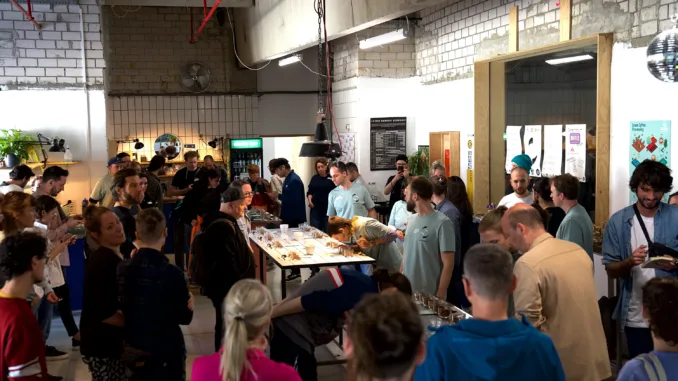
In October, the third edition of Canephorum brought the specialty-coffee community together in Berlin.
BY ISABELLE MANI
SPECIAL TO BARISTA MAGAZINE ONLINE
Photos by Iris Wang
Coffee professionals, scientists, and coffee lovers gathered in Berlin on October 18-19 for the third edition of Canephorum. Spearheaded by Germany-based trade company cumpa, with CEO Lukas Harbig co-organizing with Gloria Pedroza—head of quality at NKG Quality and Coffee Quality Institute board member—the event was hosted by Communal Coffee, Germany’s largest co-roasting facility. This two-day event was all about exchanging knowledge on the Coffea canephora coffee species (known as robusta, its commercial name), packed with keynotes, discussions led by leading scientists and industry experts, and the tasting and cupping of 40 coffees from more than 20 countries.
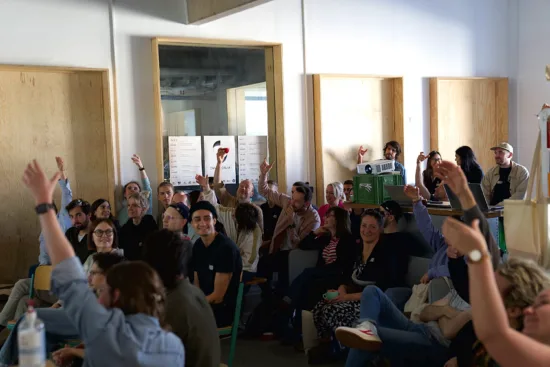
Sensory Evolution: Learning to Taste Fine Robusta
A major theme at Canephorum was the evolving perception of canephora’s sensory profile.
Gloria stressed the importance of tasting fine robusta with its own set of baseline standards, metrics, and expectations: “The format we use for analyzing canephora is similar to that of arabica, but there are a few key differences because they’re two different species with different characteristics and strengths.”
Dr. Fabiana Carvalho, a neuroscientist who leads The Coffee Sensorium research project, showcased the open-source, soon-to-be-published first version of the “Canephora Flavor Wheel,” part of an international scientific effort that intends to progress into crafting specific flavor wheels for all commercially produced origins. Fabiana’s findings indicate that common canephora flavor notes include roasted cereals, roasted nuts, caramel, dark chocolate, and some spices.
Gloria and Fabiana said that tasting canephora requires context. Evaluating sensory attributes involves not only the intrinsic flavor of the beans but also external factors like expectations, environment, and the broader sensory experience (visual and olfactory cues). “We are genetically equipped to refine our ability to detect and appreciate its unique sensory profile despite its bolder and earthier flavors compared to Arabica,” they explained.
So, what should be expected from a high-quality canephora cup?
According to Gloria and Fabiana, the benchmarks for a high-quality robusta are a clean, sweet, neutral, and balanced cup. “It has softer acidity and naturally more bitterness due to its chemical composition, which some processing techniques can enhance,” said Gloria. “When assessing quality, we’re not looking for zero bitterness but rather the modulation between bitterness and sweetness.”
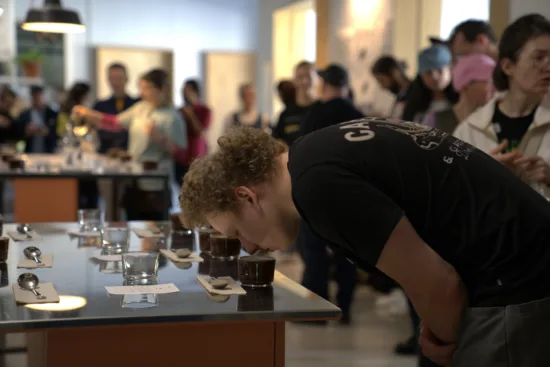
The Importance of Genetic Diversity
At Canephorum, the crucial role of genetic diversity in optimal canephora farming was emphasized. Unlike arabica, which is self-pollinating and can be cultivated with single varieties in isolated plots, canephora is cross-pollinating.
This means different genetic lines must be planted together to ensure successful pollination and fruit set, a fundamental difference that highlights why canephora varieties cannot be understood under the arabica context; they need genetic diversity in their lines to thrive.
Robrecht Bollen, a bioengineer and Ph.D. researcher from Meise Botanic Garden in Belgium, explored this topic more deeply during his keynote address.
He explained that focusing on genetic lines and groups, rather than individual varieties, is essential. “By planting diverse genetic lines together, farmers not only improve pollination efficiency, but also tap into a wider genetic pool that leads to better quality, sustainability, and high-quality coffee,” Robrecht said. He highlighted the Lula genetic line, the object of four scientific publications by him and his team, as a prime example. Originating from the Lula Coffee Research Station in the Democratic Republic of Congo, these cultivars possess desirable traits like high productivity and disease resistance. “By concentrating breeding efforts on groups such as the Lula line, farmers can harness these beneficial traits without compromising the genetic diversity of wild accessions,” he said.
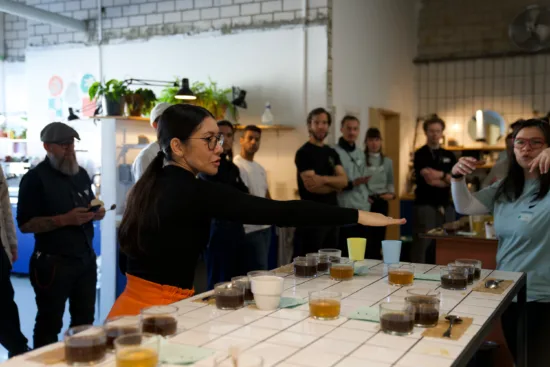
Roasting Science: Unlocking the Potential of Canephora
Roasting science was one of the most exciting areas explored at Canephorum. “Roasting techniques designed for arabica often fail to highlight robusta’s best qualities, underscoring the need for specialized approaches and tailored technology,” explained Dr. Lukas Macheiner from 220 Grad Coffee, a roasting expert from Vienna with a Ph.D. in coffee chemistry.
Chlorogenic acids (CGAs), higher in canephora than arabica, protect coffee plants from pests and diseases. They also help manage caffeine levels and prevent toxicity, allowing the plant to defend itself without harm.
CGAs also play a big role in coffee’s acidity and bitterness. When coffee is roasted, these acids break down into simpler compounds like quinic and caffeic acids. When not correctly modulated in roasting, this process can make the coffee taste more bitter and change how acidic it feels in the final cup.
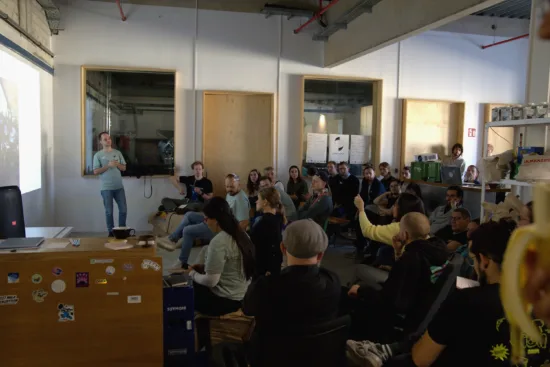
Don’t Fear the Dark Roast
Even though the common perception is that robusta and dark roasts often lead to bitterness and associations with lower quality, canephoras benefit from them, said Dr. Macheiner.
“Don’t fear dark roasts; when done right, they enhance canephora’s flavors without excessive bitterness. Controlled dark roasting transforms CGAs into compounds that add desirable complexity instead of harshness, preserving enough acidity to provide a lively character without overwhelming the palate,” Dr. Macheiner said. “That’s why finding the right balance is key.”
He added that tools like color meters and roast profiles can help track CGA degradation and caffeine transformation.
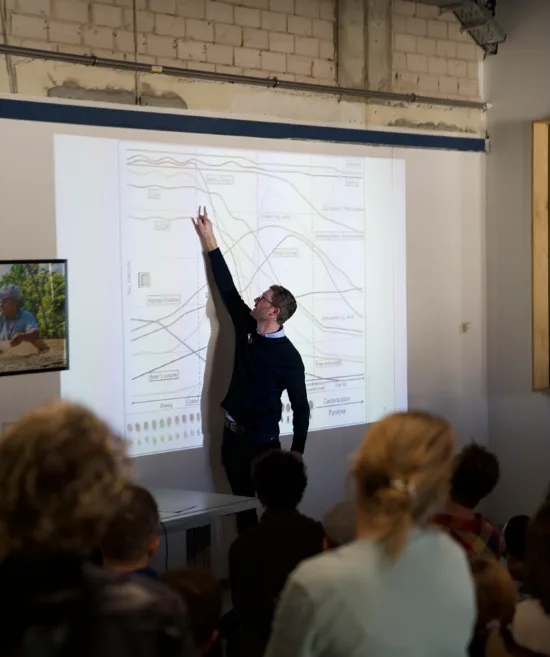
Roasting Machines and Canephora
Dr. Macheiner recommended increasing airflow during the roasting to remove undesirable volatiles after the crack. With drum roaster machines, aiming for smaller batches ensures improved heat distribution and control is best, leading to more consistent roasting outcomes, a realization echoed by roaster Mikolaj Pociecha from Chunky Cherry Coffee, who wrote his own books on canephora roasting, in his keynote. Dr. Macheiner and Mikolai said the market would benefit from roasting machines tailored to roasting canephoras.
Fluidized bed roasters, they said, are becoming more popular for roasting fine robusta, as they allow for more precise heat control and evenly roasting to manage the higher CGA levels and achieve a balanced flavor profile.
Another significant finding is that, since washed-processed canephora typically has a lower CGA content compared to naturally processed beans, it tends to perform better in drum roasters by allowing for more consistent heat distribution and control.
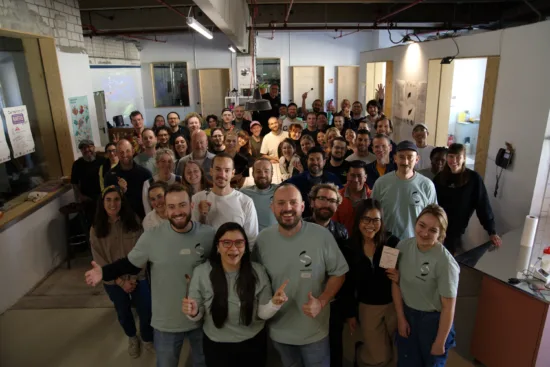
Why Does Raising Awareness of Canephora Matter?
The speakers and organizers—all volunteers—stressed that despite them being on the frontline of this exploration, unlocking the canephora universe is still in its beginning steps.
Despite its long-standing presence in the coffee market—often as an espresso filler and with the status of an inferior beverage—canephora’s genetic diversity and optimal techniques for producing high-quality beans remain largely unexplored. This has led to significant gaps in the understanding of its sensory complexities.
Essentially, we all left Canephorum with a firm insight into how much more can be learned—and applied—in optimizing everything, from processing methods and variety selection to fine-tuning roasting profiles and perfecting brewing and cupping techniques.
ABOUT THE AUTHOR
Isabelle Mani (she/her) is a writer, journalist, and communicator specializing in the international coffee industry. Since 2017, she has focused on writing articles and features for various international coffee news outlets. Isabelle has traveled to coffee-producing countries such as Colombia, Kenya, Rwanda, China, and Brazil to study and research coffee. She holds training certifications from the Specialty Coffee Association (SCA) and the Coffee Quality Institute (Arabica Q Grading).
Subscribe and More!
As always, you can read Barista Magazine in paper or digital format. Read the October + November 2024 issue for free with our digital edition.
And for more than three years’ worth of issues, visit our digital edition archives here.





